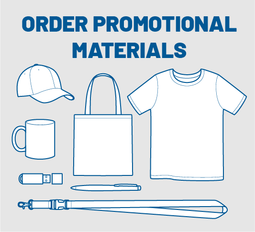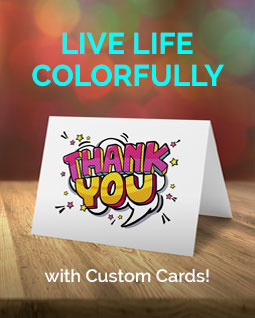More Print Tips
- • Maximum Impact: Is it Best to Send a Postcard or a Letter?
- • Drive Rapid Response to Your Direct Mail: 10 Pro Tips
- • The Usefulness and Utility of Print Marketing
- • Boost Sales with Brochures
- • 5 Opacity Tips You Should Know
- • The Window to Marketing
- • Profitable Postcard Marketing: Finding the Right Frequency
- • 3 Fundamentals for Nailing Your Direct Mail Marketing
- • Picking the Perfect Paper
Boost Sales with Brochures

A great way to bring more awareness to your product, event, or business is with a brochure.
The personal and informative nature of brochures allows you an opportunity to expand on what you have to offer. Check out the tips below to enhance your brochure design.
7 Brochure Design Tips
1. Will your brochure highlight a single item or several?
2. Think about what point your customers are at in their buying journey. Are they merely interested in learning more about a product or service? Or are they on the verge of purchasing? Create accordingly.
3. Will the appeal be emotional or more pragmatic? Decide if the items featured are more practical or if they will enhance a potential customer’s life or image.
4. Decide on the overall style. The piece's tone should be business, fun, formal or informal, but not a confusing mash-up of all of them.
5. Are you trying to portray an image or convey information? Again, decide before you start creating your brochure.
6. Pretend you are the customer. What questions need to be answered? Then answer them.
7. Break up the copy with pictures, subheads, and bulleted lists.
Brochure Types to Set Yourself Apart from the Competition
Here are several types of brochures to make your business stand out.

1. Traditional Brochures work for basic information. Small brochures are created by folding an 8.5 x 11-inch sheet of paper into thirds and printing on both sides. They contain basic information.
2. If you have more information to share, Stapled Brochures work nicely. However, if the brochure starts to go into the double digits, it’s generally wise to include a small table of contents or an index.
3. Teaser Brochures target prospective buyers early in the decision-making process. They are smaller in size, such as a one-page brochure.

4. Tell-All Brochures go to the next level. These target people who are at the decision-making stage. These are lengthier, such as booklets.
5. “Impressers” are like small magazines regarding their sophistication and number of pages. These work well for luxury items, complex technical products and services, and intangible items such as public relations or financial services.
6. Sometimes, you should create a Series of Brochures to update them easily. Differentiate them with different colors on the front, pictures, and text.
Whichever type of brochure you choose, you can put them to work for you and distribute them to the masses by placing them on counters, in racks, using them at events, mailing them to prospective buyers, and more.
Reach out today if you’d like help creating the perfect brochure to boost sales at your business!


About Design: Insights and Provocations for Graphic Design Enthusiasts
by Gordon Salchow
About Design offers an enlightening and opinionated, albeit concise, excursion concerning many facets of the field of design. It emphasizes the discipline of graphic design, while incorporating a taste of the author’s makeup. The content will tempt any readers who may be marginally inquisitive concerning visual art, design, and the web of “creativity.”
This informative, and sometimes scrappy, expedition is founded on the author’s fifty-five years’ entrenchment in design practice and higher education. Consequently, there are many pointed and sometimes novel perspectives, but it is essentially grounded on the commonly acknowledged doctrines that exist within the field. Some of the particular chapter topics deal with:
- Defining the elements of visual form
- An analysis of the concepts of aesthetics and creativity
- Establishing some usable guidelines for effective designing
- Outlining many factors that are involved with design education, including a sketch of its history
- Miscellaneous related subjects, such as considerations of what makes something exceptional
The aforementioned themes, along with others, are interspersed with interludes that challenge certain long-held assumptions, provide contextual references, offer insights and suggest some fresh ways to analyze how we see, choose, inspire, and do.



Share this